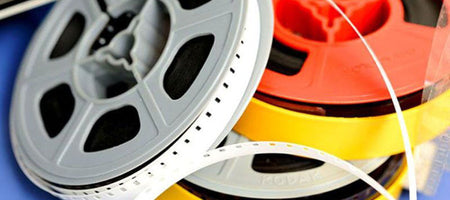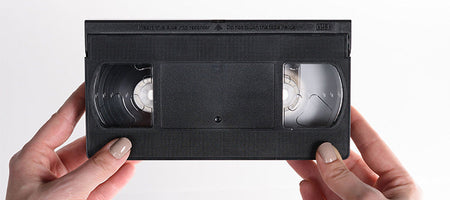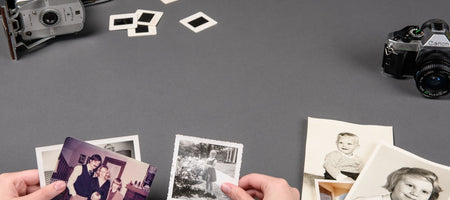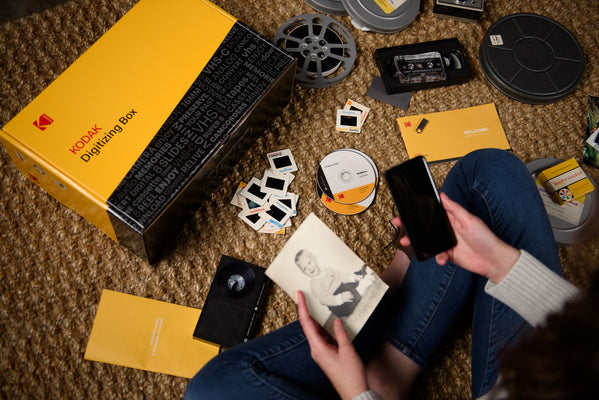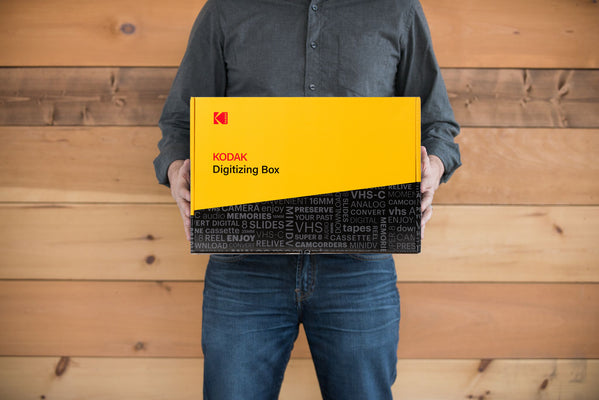Looking to revive your home movies, but you’re not sure what kind of analog tapes you’re dealing with? Let’s walk through different analog tapes, how you can tell the difference and what can be digitized at KODAK Digitizing Box.
VHS
VHS is the most common tape that we can all recognize. It’s black, about 7.4 inches long, by 4 inches wide, and 1 inch in depth. The VHS tape was the most commonly used tape for recording your favorite tv shows, watching movies, and catching your football game on the television since you had to be at your cousins wedding shower.
VHS-C
Although the name sounds very similar to VHS, there is a difference between VHS and VHS-C! The VHS-C is smaller in stature compared to the VHS. 3.5 inches long, 2 ¼ inches width, and ¾ inches in depth!
Mini-DV
The mini-DV lives up to its name! It is small in stature. The cassette tape measures 2.6 inches long, 1.9 inches thick and only 0.5 inches in depth! Note that this is not a “cassette tape” as in audio. It is still a video tape, just smaller and considered a “cassette” due to its size.
Hi8 and Digital 8
Both the Hi8 and Digital 8 are similar in size and do look a lot alike! They are both 8mm in width, which is why they keep the “8” in their name. One clear way to distinguish the difference between Hi8 and Digital 8 is that it will say the title of the tape on the front.
MicroMv
The MicroMV is the smallest videotape format - 70% smaller than the MiniDV! Fun fact: it’s about the size of two US quarter coins. What?! It’s even smaller than the Hi8 and Digital 8 tapes!
Beta
This tape was released in 1975 and has been a long running fan favorite - even before the VHS tape was invented! The Betamax tape is 15.6 cm long, 9.6 cm wide, and 2.5 cm in depth! It looks somewhat similar to the VHS tape, however, it has one large circular tape in the front that is visible. The VHS has two white cogs that are visible.
PAL vs NTSC
These are two separate tape formats that are indistinguishable from the outside of the tape. Both NTSC and PAL tapes look similar to VHS and can be played on the VCR. The encoding system is typically transcribed into the plastic cassette, that is one true way to tell if you have PAL or NTSC. PAL stands for “Phase Alternating Line” and “NTSC” stands for “National Television Standards Committee.” Again, VCRs were built to be compatible with NTSC formats, Although PAL can sometimes play on a VCR, the image will be distorted, especially the color...which may completely disappear when you try to play in on a VCR.
No matter what kind of tape you are working with, there are ways to tell by the physical appearance. Your memories are special and they are built and stored on some pretty important pieces of plastic. But think about that...your memories are stored on PLASTIC. It’s not indestructible and time will eventually eat away at your family memories. Make sure you get them digitized with KODAK Digitizing Box! Your memories will be safe and ready to be relived again and again. Plus, you can easily share your memories with friends and family.

